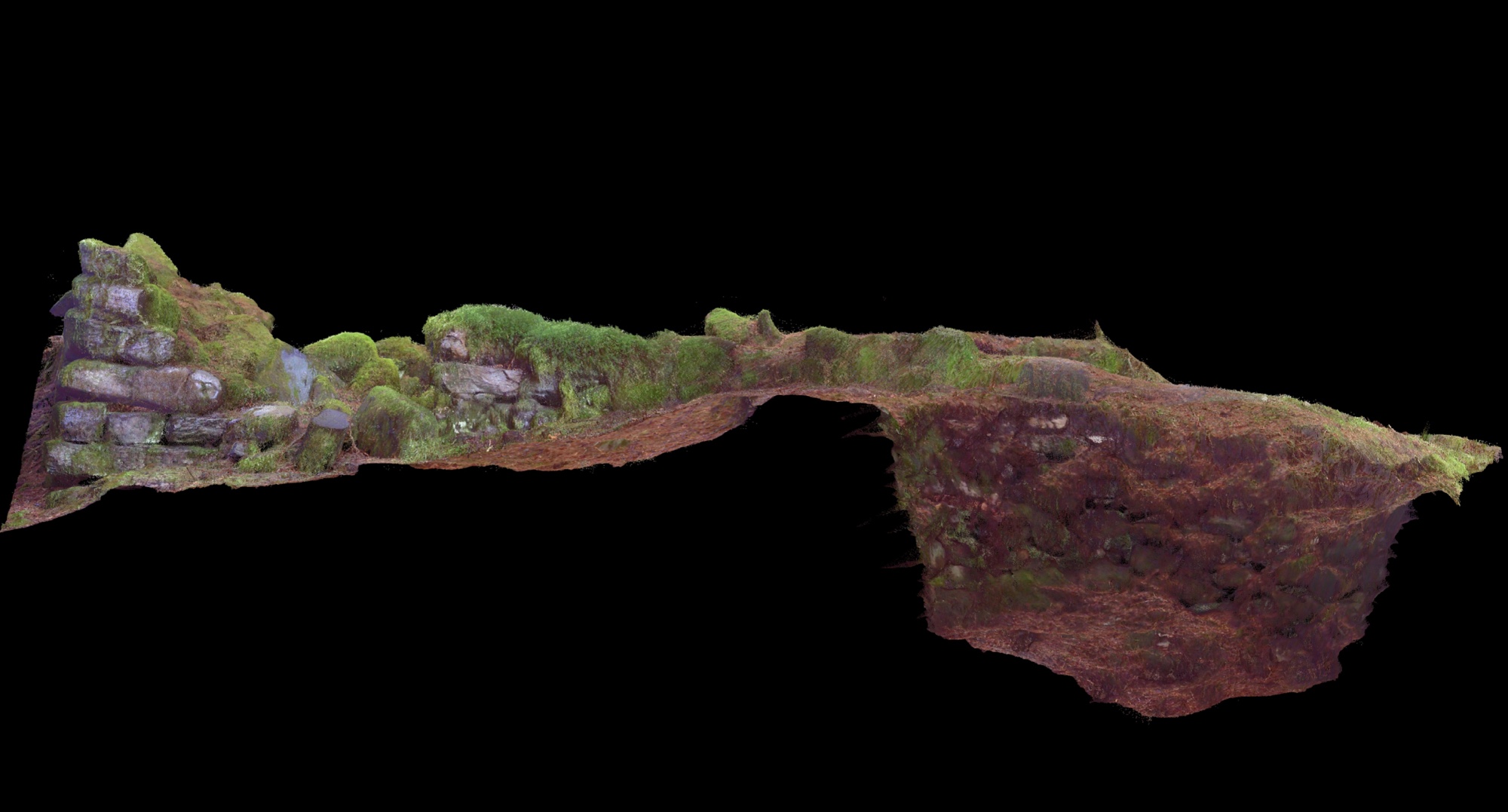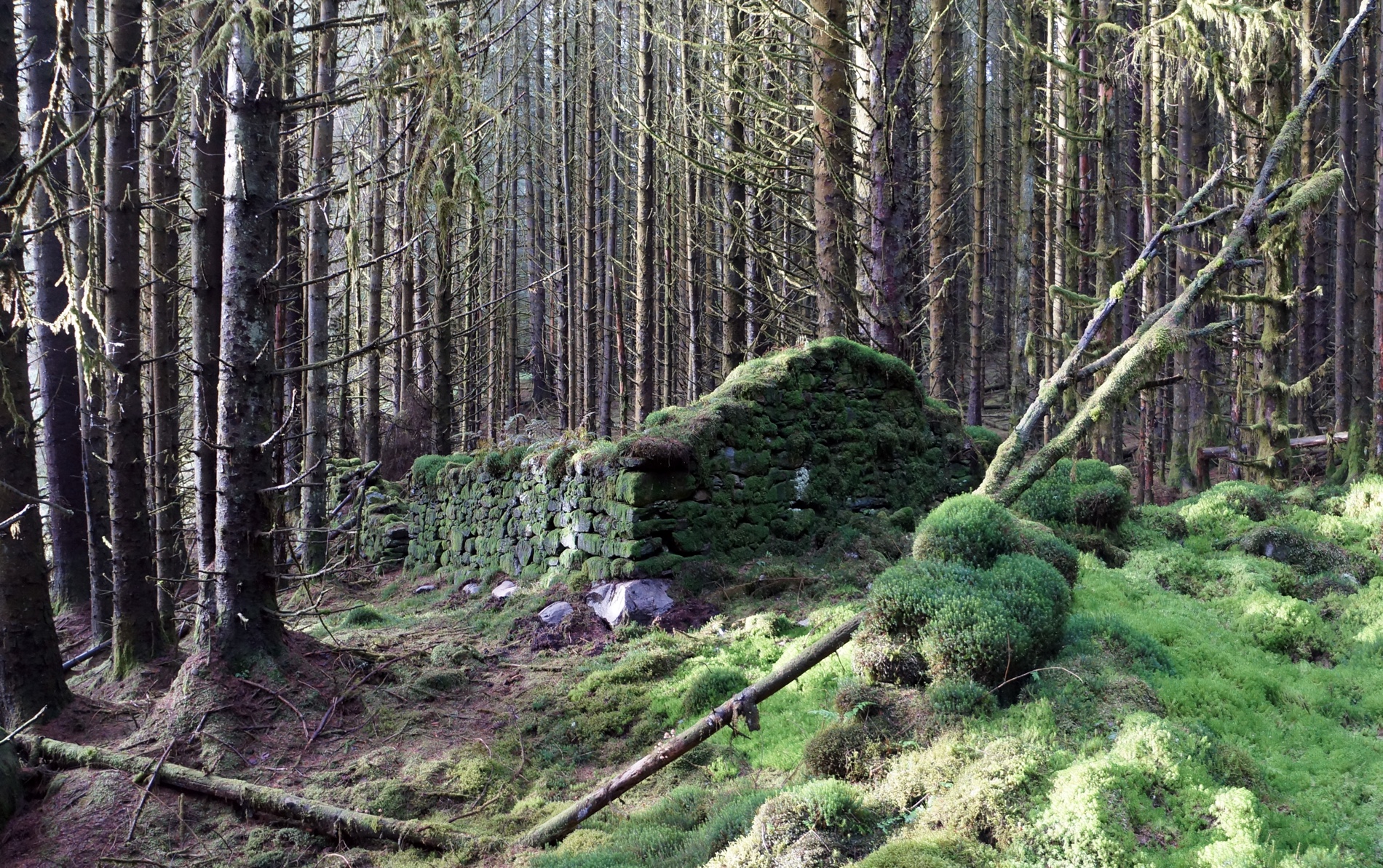Hidden Scottish Ruins May Have Been Illegal Whisky Stills, Says Archaeologist

Mystery surrounds a group of ruined stone buildings hidden in a remote forest in the Scottish Highlands, with an archaeologist suggesting they were once an illegal whisky distillery.
A local history group alerted the government agency Forest and Land Scotland (FLS) about the hidden ruins last year, indicating they were located in the forests above Loch Ard, about 20 miles (30 kilometers) north of the city of Glasgow.
Ahead of tree harvesting in the area, FLS archaeologist Matt Ritchie directed a detailed 3D survey of the site — the remains of two 18th-century stone farmsteads located about 650 feet (200 meters) apart, with a stream running between them.
Related: Photos of Ruins of Possible Scottish Whisky Distillery Uncovered
Ritchie said he now thinks the site may have been used in the late 1700s and early 1800s to distill whisky for sale in Glasgow, a lucrative trade that was illegal at the time.
The long, narrow buildings would have been ideal for whisky stills, and both farmsteads, known as Wee Bruach Caoruinn and Big Bruach Caoruinn, were well hidden on a hillside, deep in the forest, Ritchie told Live Science.
"It is quite remote. You've got big corn-drying kilns, and you have got water nearby," he said. "My immediate thought was that maybe there was something interesting there."
Sign up for the Live Science daily newsletter now
Get the world’s most fascinating discoveries delivered straight to your inbox.
Local legends describe how the region around Loch Ard was used to hide illicit whisky stills and stolen cattle, but historical research has found nothing conclusive. "There are whispers of this sort of activity going on, but there is nothing firm to tie distilling to that site," Ritchie said.

Whisky laws
Ritchie explained that laws on the production and sale of whisky from the late 1700s meant many small stills were shut down on farms throughout the Highlands, while commercial distilleries that could be taxed stayed in business. "There was a period in Scottish history where the government clamped down on whisky distilling," he said. "Suddenly, it becomes illegal, and what was your normal farm activity then goes underground."
Government officers known as "excisemen" scoured the Highlands for illicit stills, confiscating illegal whisky and distilling equipment. As such, it was important to have a site that was hard to find but still close to a major market like Glasgow.
The government also imposed a heavy tax on malted barley, a traditional ingredient of Scotch whisky, made by "toasting" the grain at high temperatures. To avoid the tax, commercial whisky distillers started using unmalted "corn spirits" to make their whisky, which resulted in a noticeably inferior drink, Ritchie said.
"The big lowland distilleries are using pretty rough stuff, but your Highland or illicit whisky still is producing good-quality whisky from good-quality ingredients," he said. "This was much in demand, and it could be smuggled south into the more-populated lowlands and sold on for a good profit."
At the time, whisky was bottled directly after being distilled, without the long aging process of "maturation" developed in the 19th century. "It must've been quite a rougher spirit than we would be used to, but equally, it is a simple process," he said.
Laser-scanning survey

Ritchie and his colleagues have now used 3D data from laser scans of the buildings to create an artistic interpretation of some of the buildings as they may have looked as a whisky distillery in the 1700s.
Related: The 25 Most Mysterious Archaeological Finds on Earth
"That for me is the story: the creative archaeological visualization of the ruins and taking that a stage further and imagining what the activity on the farmstead was like in the past," Ritchie said.
Of particular interest are two large brick kilns, which would have been used to dry "corn," a catchall name for farmed grains, as well as to malt barley for the whisky-distilling process.
The front of one kiln has collapsed, but its central, bowl-shaped chamber remains; the chamber of the second kiln has collapsed, but that kiln's front face is still intact. By combining the 3D data from the two ruined kilns, Ritchie has created an image showing how a complete corn-drying kiln would have looked.
The digital survey of the ruins also emphasizes their remote location in the forest. "They are very well preserved, and very visible, and they are in this kind of cathedral-like space, with all these big, mature conifers around," Ritchie said.
Any whisky distilling at the site would have been in secret, and the large kilns might only have been used to dry grain. Archaeological excavations of the buildings could uncover positive evidence of their earlier use, either as an illicit distillery or as a working farm. But "we have no plans to do that," he said, adding that the ruins are too remote to warrant further investigation.
For now, the old stone buildings high in the forest are keeping any secret history of illegal whisky distilling to themselves. "The ruins are just being left alone," Ritchie said.
- 30 of the World's Most Valuable Treasures That Are Still Missing
- In Photos: Stone Monument Discovered in Scotland
- In Photos: Intricately Carved Stone Balls Puzzle Archaeologists
Originally published on Live Science.

Tom Metcalfe is a freelance journalist and regular Live Science contributor who is based in London in the United Kingdom. Tom writes mainly about science, space, archaeology, the Earth and the oceans. He has also written for the BBC, NBC News, National Geographic, Scientific American, Air & Space, and many others.









